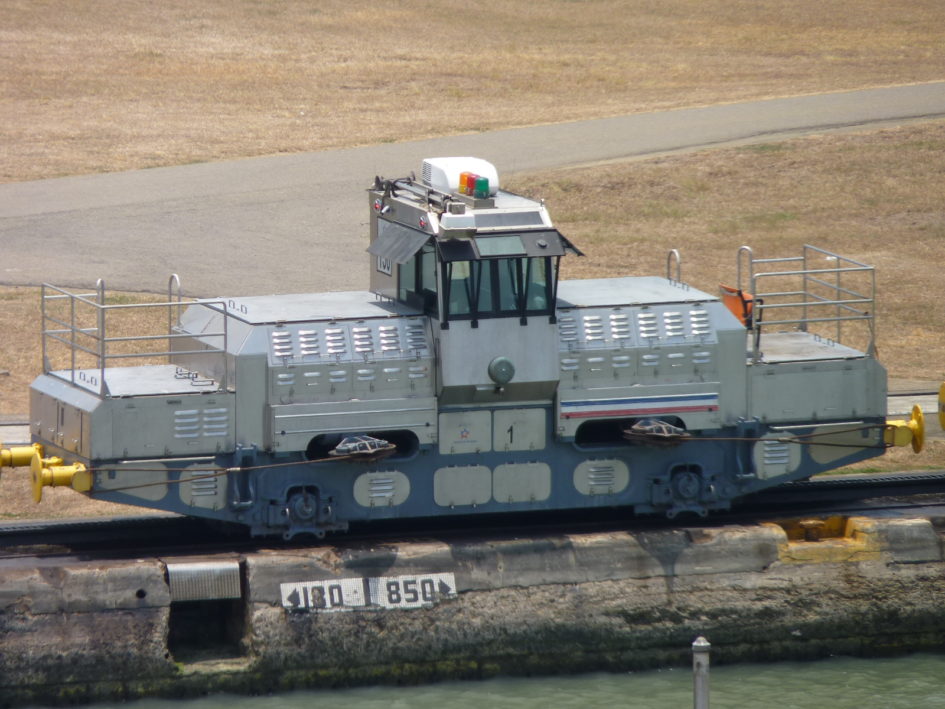ACP Equipment
During your Panama Canal transit you are likely to see lots of heavy equipment related to Canal operations:
Caisson – Safety in the Culebra Cut – Buoys – Lighthouses – Leading Marks – Canal Maintenance – Dredges and Dredging Work – Geology of the Canal – Landslides – Canal Changes – Panama Canal Stripe
Caisson
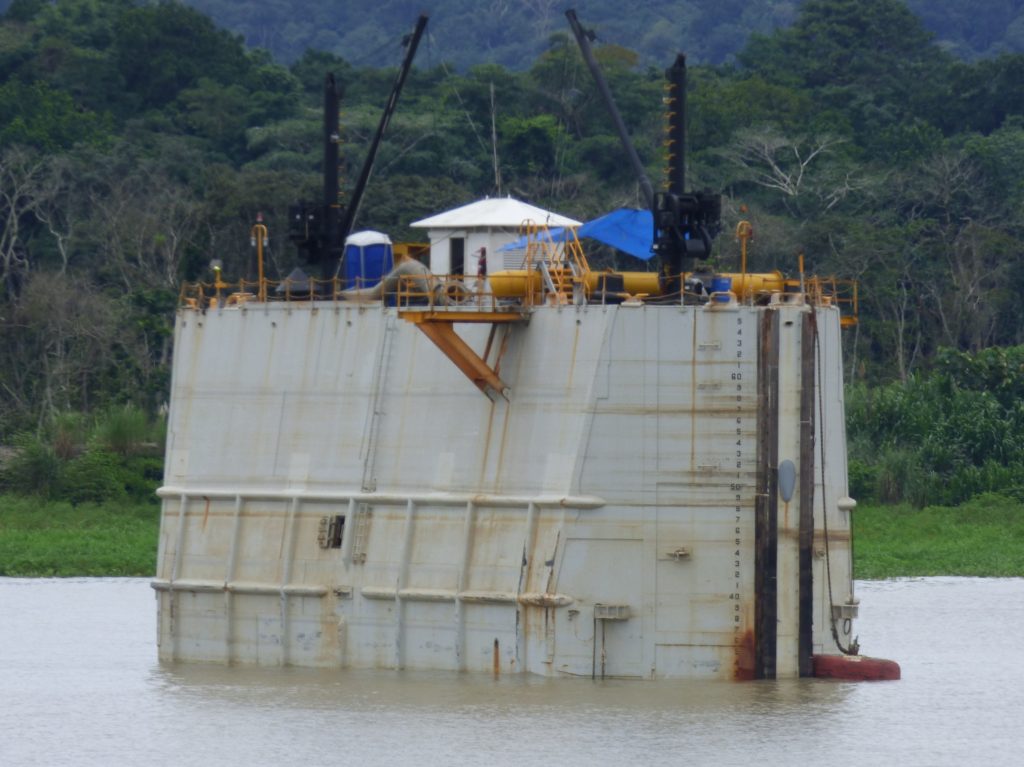
This is a large watertight chamber which is open at the bottom. Water is kept out using pressurized air so that so that construction work may be carried out under water.
The caisson is used for maintenance in the lock chambers.
Safety in the Culebra Cut
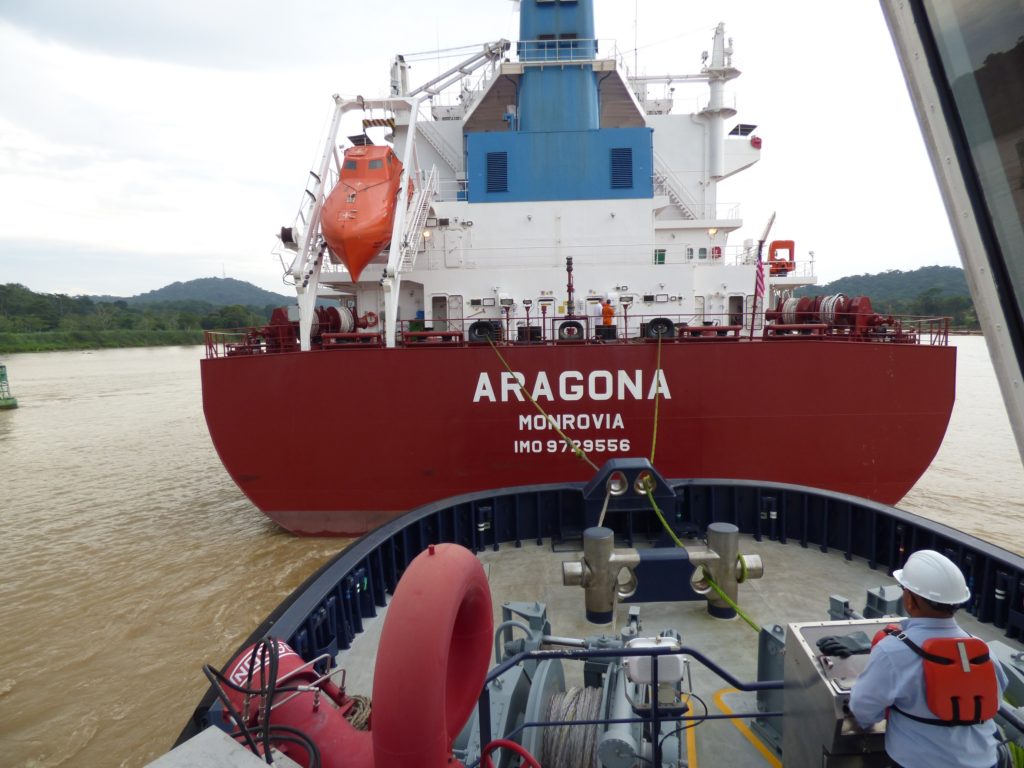
Between Gatun Locks and Gamboa there are several ACP-designated ‘beaching’ areas where ships in distress can exit the buoyed channel and await help.
In the Culebra Cut there are no such areas, so every commercial vessel over 90 feet wide must be accompanied by at least one ACP tug, which is usually located on the stern of the ship.
Navigation is restricted in the Cut so that two large vessels cannot pass each other. This means the entire Canal operations operate around a schedule whereby northbound ships travel in the morning and southbound in the afternoon. A lot of the ships at anchor on Lake Gatun in the morning are waiting for the reverse in traffic.
Buoys
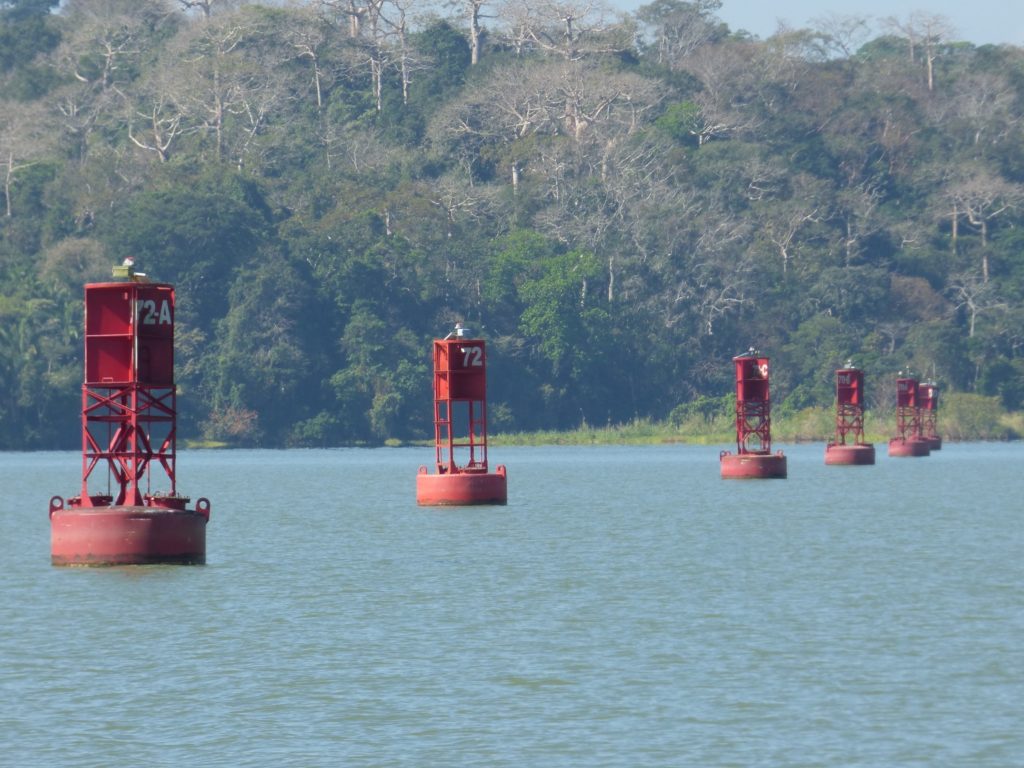
The main channel of the Canal had 289 permanent buoys when we wrote this, but the number is constantly expanding as the channels are being dredged and altered.
Lateral buoys located north of the Pedro Miguel Lock are painted red to indicate the west side of the channel and green to indicate the east side. The colors reverse south of Pedro Miguel Lock.
Note that there are multiple navigation buoys with the same number. Look out for 60¼ and 60½ and the others marked A, B, C etc. Additional buoys have been added over the years to improve navigation and instead of renumbering all the buoys, letters were used.
Lighthouses
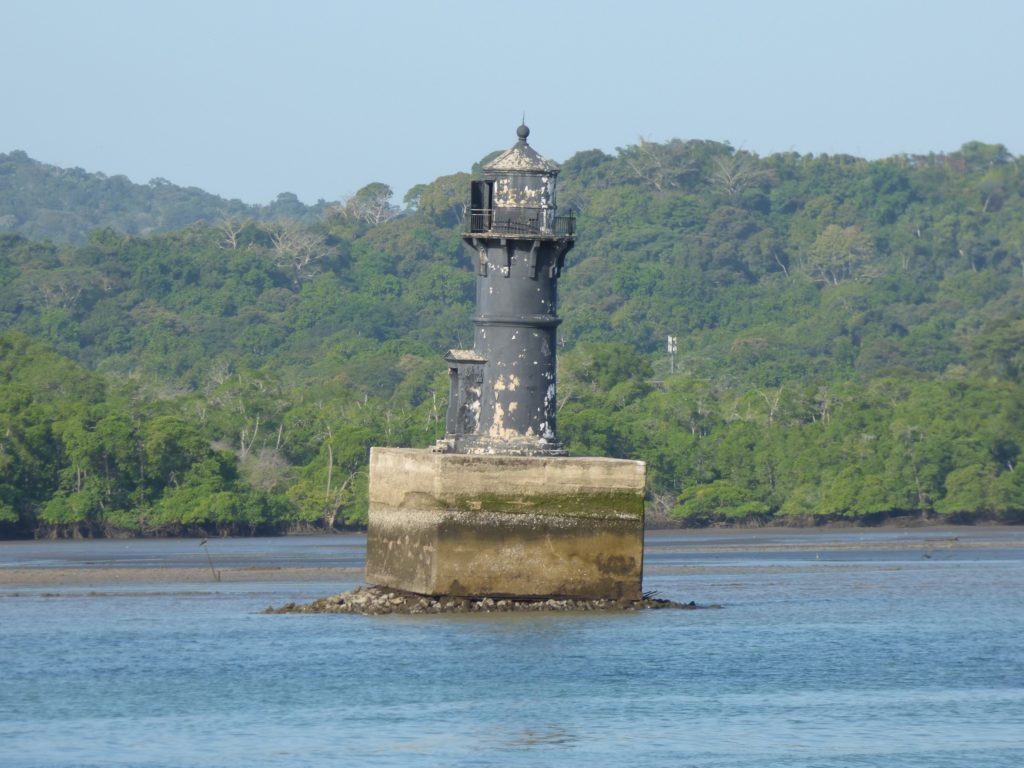
There are 40 lighthouses on the Canal, of which two are on Barro Colorado.
The oldest lighthouses are located in Punta Toro in the Atlantic and Flamenco in the Pacific, both dating from the period of construction of the Canal by the French, between 1881 and 1898.
Leading Marks
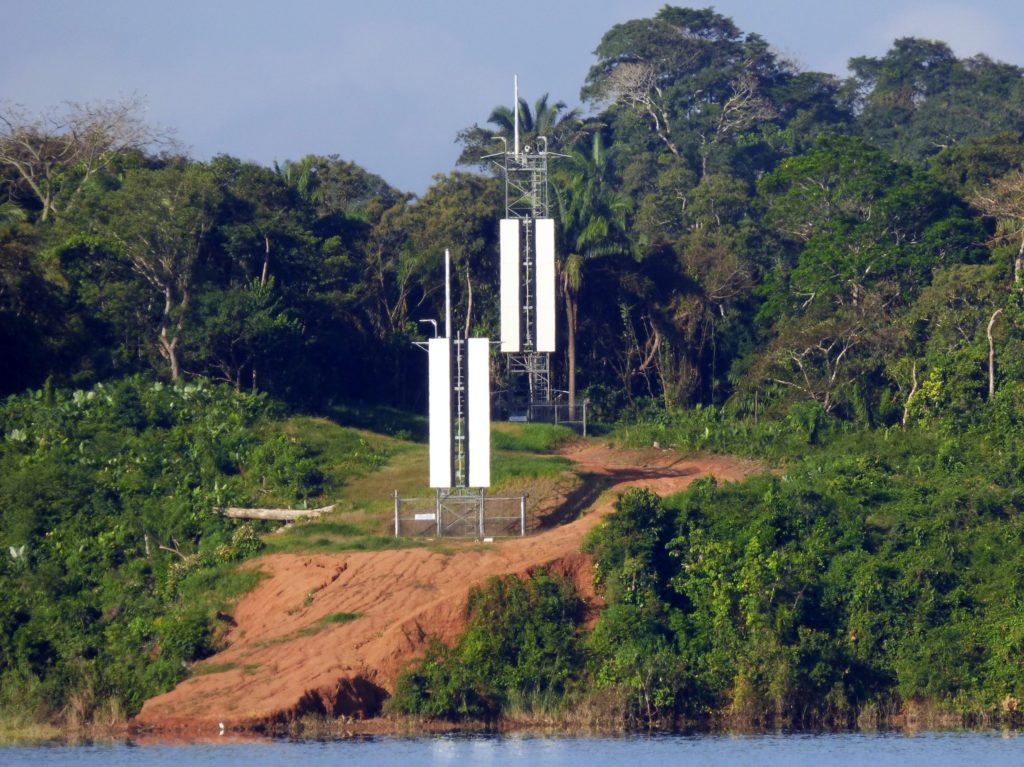
The Panama Canal does not run in a straight line, so as well as the buoys and lighthouses marking the edges, there are many leading marks indicating the direction of the channel.
These are pairs of structures with lines down the middle. When the Pilot can see them in line with each other he or she knows that the vessel under their command is in the centre of the channel.
The marks are lit at night and are in the process of being updated with coloured lights.
Canal Maintenance
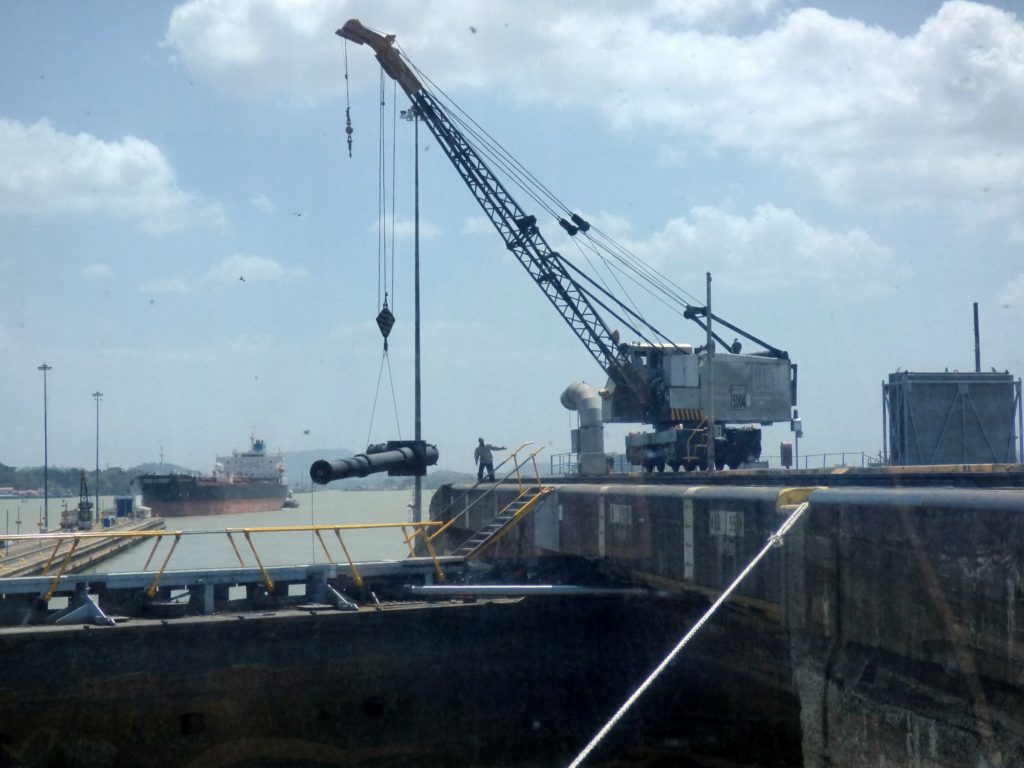
The ACP has a variety of cranes and other equipment to help with the constant maintenance required to keep the Canal in operation.
Widening of the Canal
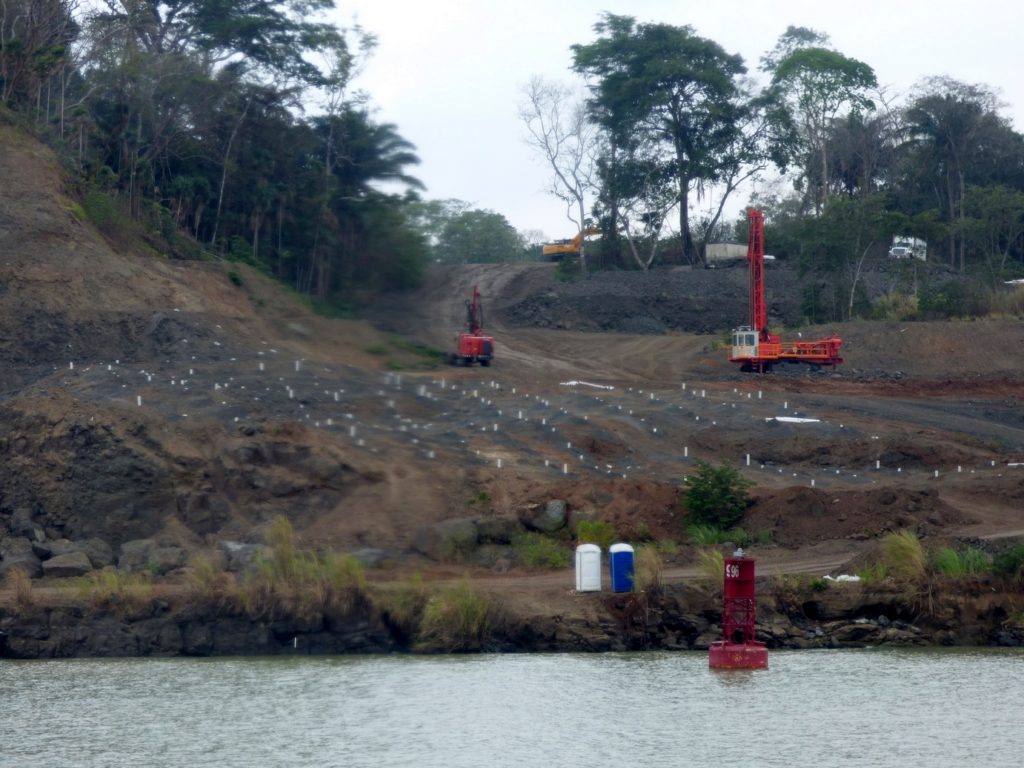
At the time of writing this guide there is an extensive dredging project underway near Gamboa in order to accommodate the neo-Panamax vessels using the new expansion locks. You should observe large earthworks on the starboard side.
You might see areas where large plastic tubes are pushed into the ground. These are for the dynamite, which will blow out the hard rock.
Geology of the Canal

Panama’s complicated geology was one of the major difficulties faced during construction of the Canal. In many places you can see the multi-layered rock and evidence of slips and cracks still occurring today.
Landslides
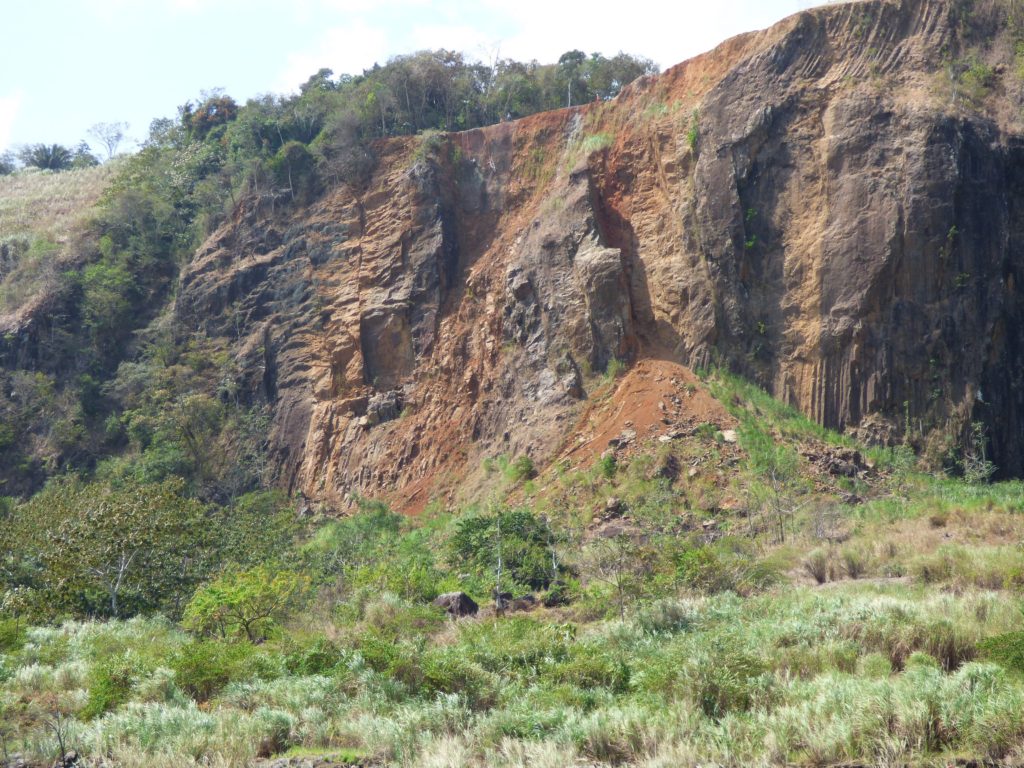
Landslides were a problem from the very beginning of the Canal project, and played a big part in bankrupting the French effort.
More than 60 landslides over the years resulted in 45 million cubic metres of additional excavation before the Canal was handed over to Panama in 1979, as much volume as contained in 15 Cheops pyramids.
The worst of the slides occurred in 1912 in front of the town of Culebra, when 75 acres broke away. This was 10,000,000 cubic yards from the west bank and 7,000,000 cubic yards from the east bank, which took four months to dig out.
The Canal was closed for much of its second year of operation due to two massive landslides.
Canal Changes
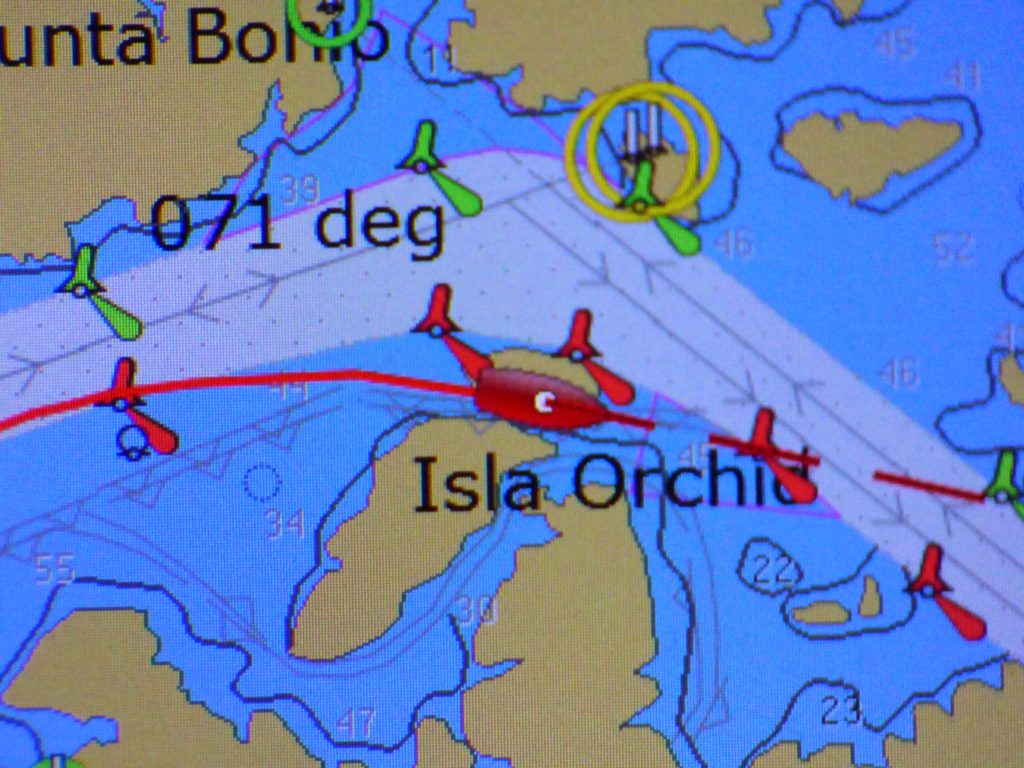
On a recent transit this was the navigation system showing that the Canal dredging was ahead of the chart updates!
Work on the expansion of the Canal has included widening and straightening many of the channels.
You can see many places where the Canal has obviously been changed recently.
Panama Canal Stripe
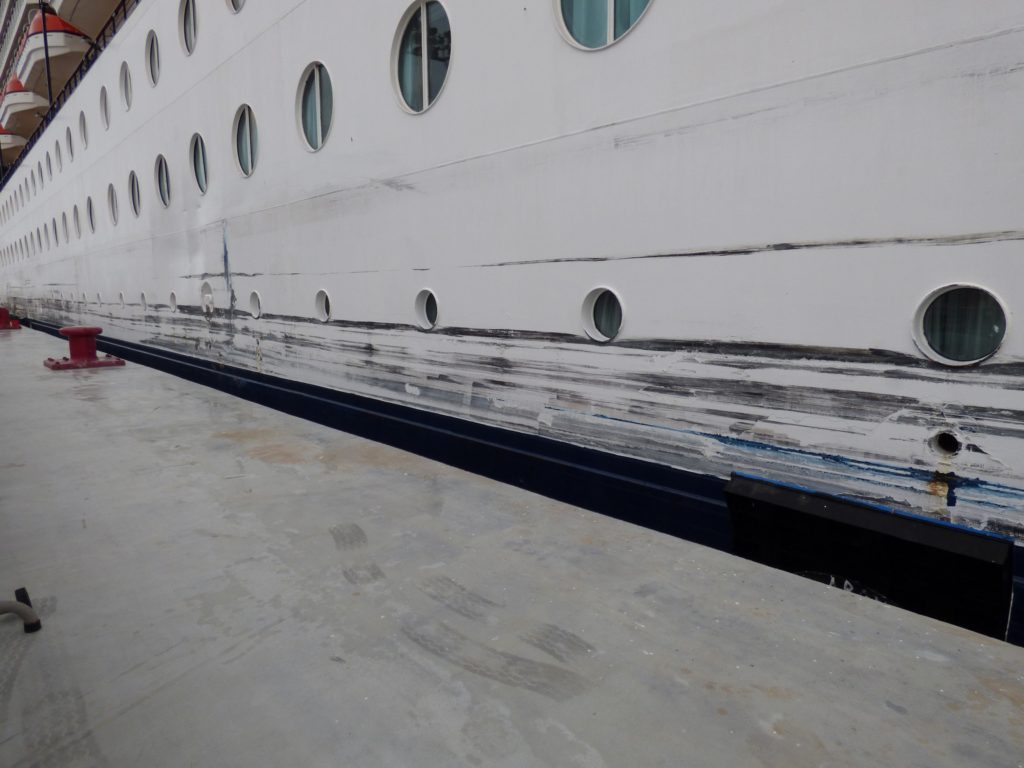
Next time you go ashore, check to see if you have a souvenir stripe from your transit!
There are also lots of Sights Along the Canal
